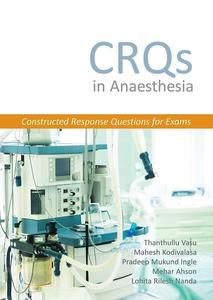
Free Download CRQs in Anaesthesia: Constructed Response Questions for Exams
English | 2019 | ISBN: 1910079790 | 552 Pages | PDF (True) | 8 MB
The Royal College of Anaesthetists has introduced Constructed Response Questions (CRQs) as an innovative way of testing trainees, in the fields of anaesthesia and intensive care medicine, in their final FRCA examinations from September 2019. CRQs are a more structured way of assessing knowledge and understanding; they also assess the application of knowledge, evaluation and judgement. This book categorises 134 questions based on the Royal College model, with six mandatory sections of training and two separate sections on general duties and optional units. In the FRCA exam, there will be a total of 12 questions, one each from the six mandatory units of training (neuroanaesthesia; obstetric anaesthesia; paediatric anaesthesia; pain; cardiac anaesthesia; and intensive care), and six from general duties which may include one from optional unit training (perioperative medicine; regional, orthopaedic and trauma anaesthesia; other topics in general medicine; and optional topics). The answers have been extensively researched from recent BJA Education papers, e-learning, CEPD resources and other vital educational materials. To make it easy for the revising candidate, the questions have been split into their respective subspecialty topics, so the reader can assess their knowledge appropriately in a timely manner. It is an ideal companion for candidates who are preparing for their final exams in anaesthesia and will help to assess their preparation and guide appropriate revision. The topics are pertinent for other anaesthetic exams worldwide, including the European exams, Australian and New Zealand fellowships and the Indian DNB exams. The authors have extensive experience in anaesthetic teaching and lead anaesthetic intermediate teaching in the UK, running regular and successfully attended courses. This book will help candidates to adapt to the recent exam changes and revise in an efficient manner. It will not only be an invaluable educational resource for trainee anaesthetists but also for practising anaesthetists. Medical students and junior doctors, who are about to embark on a career in anaesthesia or intensive care medicine, will also find the book to be a useful educational tool.
